Cellular Adaptations Important Notes
1. Terms
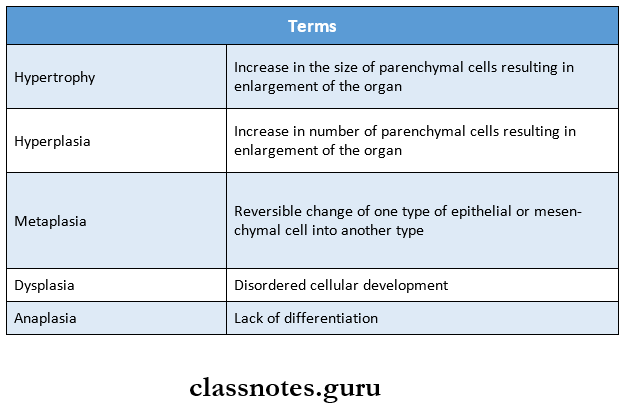
Cellular Adaptations Long Essays
Question 1. Hypertrophy
Answer:
Hypertrophy Definition: Hypertrophy is an increase in the size of parenchymal cells resulting in enlargement of the organ/tissue, without any change in the number of cells.
Hypertrophy Etiology:
Hypertrophy is caused by increased functional demand or by hormonal stimulation.
Hypertrophy Etiological types:
It may be classified into:
- Physiologic hypertrophy: Enlarge the size of the uterus in pregnancy.
- Pathologic hypertrophy: Hypertrophy of cardiac muscle: In cardiovascular disease.
- Systemic hypertension
- Aortic valve disease
- Mitral insufficiency.
- Hypertrophy of smooth muscle:
- Cardiac achalasia (in the esophagus)
- Pyloric stenosis (in the stomach)
- Muscular arteries in hypertension.
- Hypertrophy of skeletal muscle:
- A hypertrophied muscle in athletes and manual laborers
- Compensatory hypertrophy: This may occur in an organ when the contralateral organ is removed.
- After nephrectomy on one side in young patients there is compensatory hypertrophy of the kidney as well as nephrons on the other side.
Morphologic features:
- The affected organ is enlarged and heavy.
- There is an enlargement of muscle fibers as well as of nuclei
Read And Learn More: Pathology Question And Answers
Question 2. Metaplasia
Answer:
Metaplasia Definition:
Metaplasia is defined as a reversible change of one type of epithelial or mesenchymal adult cells to another type of adult epithelial or mesenchymal cells, usually in response to abnormal stimuli.
Metaplasia Types:
Metaplasia is divided into the following two types.
- Epithelial
- Mesenchymal.
1. Epithelial Metaplasia:
- Squamous metaplasia There is a transformation of various types of epithelium into squamous epithelium due to chronic irritation
- For example:
- In bronchus in chronic smokers.
- In uterine endocervix in prolapse of the ureters and in old age.
- In renal pelvis and urinary bladder in chronic infections.
- Columnar metaplasia: There is the transformation of various epithelia into columnar epithelium.
- For example:
- Intestinal metaplasia in healed chronic gastric ulcer.
- In Barrett’s esophagus, normal squamous epithelium changes to columnar.
2. Mesenchyme metaplasia: There is the transformation of an adult type of mesenchymal tissue to another.
- Osseous metaplasia: Osseous metaplasia is the formation of bone in fibrous tissue, cartilage, and myxoid tissue.
- For example:
- In the arterial wall in old age (Monchkeberg’s medial calcific sclerosis]
- In soft tissues in myositis ossifications.
- In cartilage of larynx and bronchi in elderly people.
- In fibrous stoma of the tumor.
- Cartilaginous metaplasia: In the healing of fractures, cartilaginous metaplasia may occur where there is undue mobility.
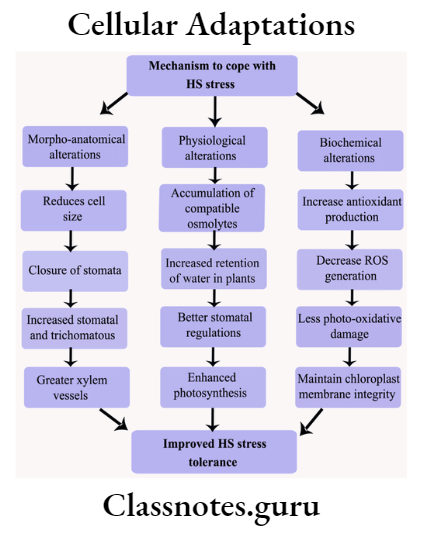
Question 3. Hyperplasia
Answer:
Hyperplasia Definition:
- Hyperplasia is an increase in the number of parenchymal cells resulting in enlargement of the organ/tissue.
- Hyperplasia occurs due to the increased recruitment of cells from the resting phase of the cell cycle to undergo mitosis when stimulated.
- Hyperplasia persists as long as the stimulus in present.
Hyperplasia Etiology:
Hyperplasia may occur due to physiologic and path-logic causes.
1. Physiologic hyperplasia: The two most common types are.
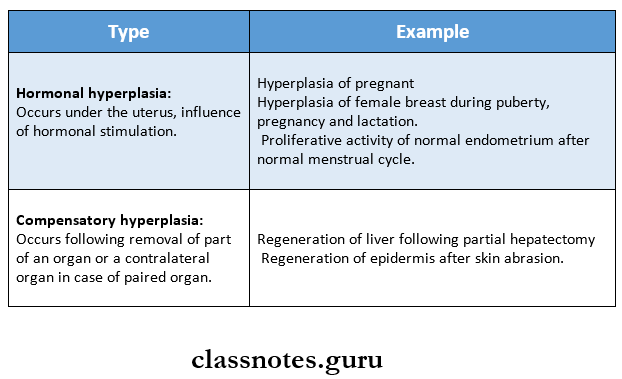
2. Pathologic hyperplasia: Due to excessive stimulation of hormones or growth factors.
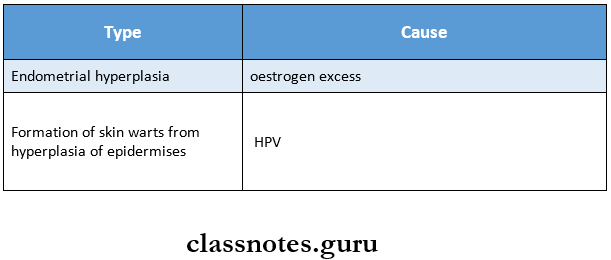
Cellular Adaptations Short Question And Answers
Question 1. Atrophy
Answer:
Atrophy Definition:
Atrophy may be defined as the decrease in the number and size of parenchymal cells of an organ or its parts which was once normal.
Atrophy Causes:
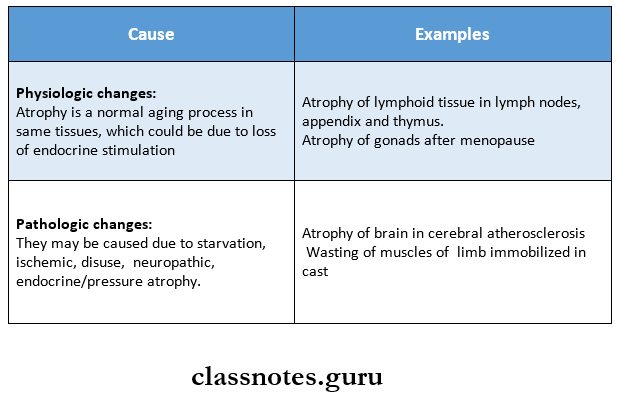
Question 2. Anaplasia
Answer:
Anaplasia Definition:
- Anaplasia is a lack of differentiation and is a characteristic feature of most malignant tumors.
- Depending upon the degree of differentiation, the extent of anaplasia is also variable i.e., poorly differentiated malignant tumors have a high degree of anaplasia.
Result of Anaplasia:
- Loss of polarity
- Pleomorphism
- N: C ratio changes from 1:5 to 1:1
- Anisonucleosis.
- Hyperchromatism.
- Prominent nucleolus
- Tumor giant cells
- Chromosomal abnormalities.
